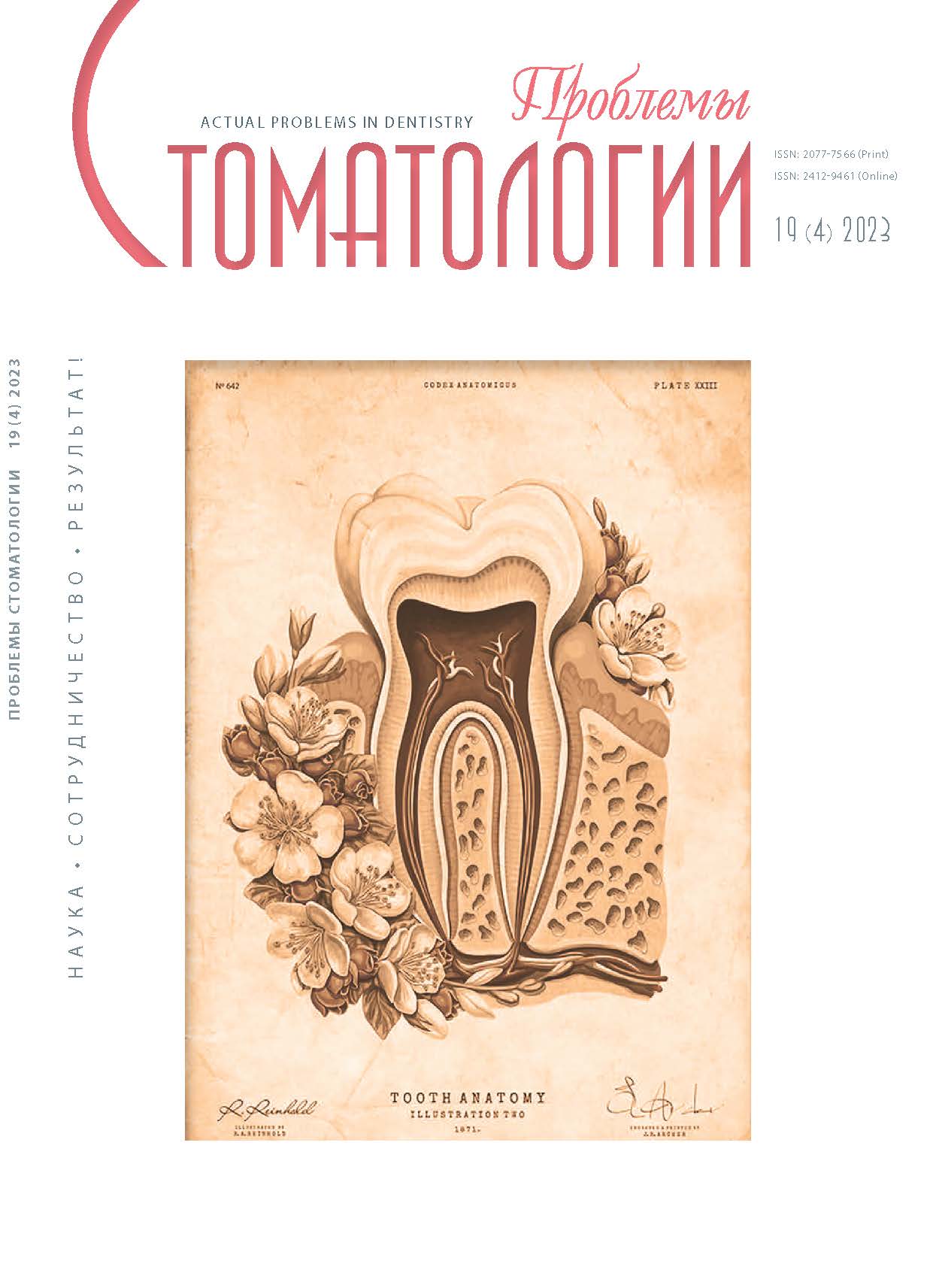from 01.01.2014 until now
Saratov, Saratov, Russian Federation
Saratov, Saratov, Russian Federation
Saratov, Saratov, Russian Federation
Saratov, Saratov, Russian Federation
UDC 616
CSCSTI 76.29
Study Subject. The study of factors that improve bone repair-one of the current clinical areas of surgical dentistry. In our study, we hypothesized that the addition of EPO to the material in reconstructive surgeries prior to dental implant placement may also have similar effects, increasing osseointegration in the bone of patients with chronic kidney disease (CKD). Erythropoietins (EPO) have been experimentally demonstrated to be involved in bone remodeling, induction of angiogenesis and secretion of a large number of trophic factors in animals. Objective to study the primary implant stability in CBD patients of both sexes with different bone categories and types, and the effect on EPO stability during delayed dental implantation (DDI). Methodology. Patients between 45 and 59 years of age who were indicated for implant dentures were included in the study. Implants were placed in the lateral and distal portions of the maxilla (LF) and mandible (LF). Results and their discussion. Depending on the gender, clubular filtration rate (CBF), 12 groups of examined patients were distinguished, each of which corresponded to a certain stage of CKD. Two more gender groups were made up of patients on ambulatory hemodialysis and corresponding to stage G5 of CKD – stage G5g. 728 implantations were performed, of which 368 (50.69%) in native bone, 112 (15.38%) in partially regenerated bone, and 248 (33.07%) in fully regenerated bone. The rotational stability index (IT) was determined using a calibrated manual torque wrench. The axial stability index – Implant Stability Quotient (ISQ) was calculated using the RchA system – Osstell ISQ – by screwing the SmartPeg Type to the implant. Each index was studied immediately after implant insertion or 6 months after reconstructive surgery, in situations where CI was not previously performed. In a prospective cohort study of a select group (those taking EPO and those without), the use of erythropoietin during dental implant surgery had a significant effect on implant stability when DI was performed according to a delayed protocol.
dental implantation, primary stability, erythropoietin, frequency-resonance analysis, torque
1. Bae JE, Hwang SM, Aryal YP, Kim TY, Sohn WJ, An SY, Kim JY, An CH, Lee Y, Kim YG, Park JW, Lee JM, Kim JY, Suh JY. Effects of erythropoietin on osteoblast in the tooth extraction socket in mice periodontitis model. Front Physiol. 2022 Oct 6;13:987625. doi:https://doi.org/10.3389/fphys.2022.987625. PMID: 36277197; PMCID: PMC9582603.].
2. Deshet-Unger N, Kolomansky A, Ben-Califa N, Hiram-Bab S, Gilboa D, Liron T, Ibrahim M, Awida Z, Gorodov A, Oster HS, Mittelman M, Rauner M, Wielockx B, Gabet Y, Neumann D. Erythropoietin receptor in B cells plays a role in bone remodeling in mice. Theranostics. 2020 Jul 9;10(19):8744-8756. doi:https://doi.org/10.7150/thno.45845. PMID: 32754275; PMCID: PMC7392011.
3. Falisi G, Severino M, Rastelli C, Bernardi S, Caruso S, Galli M, Lamazza L, Di Paolo C. The effects of surgical preparation techniques and implant macro-geometry on primary stability: An in vitro study. Med Oral Patol Oral Cir Bucal. 2017 Mar 1;22(2):e201-e206. doi:https://doi.org/10.4317/medoral.21286. PMID: 28160577; PMCID: PMC5359712
4. Javed F, Ahmed HB, Crespi R, Romanos GE. Role of primary stability for successful osseointegration of dental implants: Factors of influence and evaluation. Interv Med Appl Sci. 2013 Dec;5(4):162-7. doi:https://doi.org/10.1556/IMAS.5.2013.4.3. Epub 2013 Dec 20. PMID: 24381734; PMCID: PMC3873594.
5. Kidney Disease: Improving Global Outcomes (KDIGO) CKD-MBD Update Work Group. KDIGO 2017 Clinical Practice Guideline Update for the Diagnosis, Evaluation, Prevention, and Treatment of Chronic Kidney Disease-Mineral and Bone Disorder (CKD-MBD). Kidney Int Suppl (2011). 2017 Jul;7(1):1-59. doi:https://doi.org/10.1016/j.kisu.2017.04.001. Epub 2017 Jun 21. Erratum in: Kidney Int Suppl (2011). 2017 Dec;7(3):e1. PMID: 30675420.
6. Misch C.E., Judy W.M.K. Classification of the partially edentulous arches for imlpant dentistry. // Int J. Oral Impl. - 1987. - V. 4. - P. 7-12.
7. Misch C. E. Bone classification, training, keys and implant success / C. E. Misch // Dent Today. - 1989. - № 8 (4). - P. 39-44.
8. Tomasi C, Derks J. Etiology, occurrence, and consequences of implant loss. Periodontol 2000. 2022 Feb;88(1):13-35. doi:https://doi.org/10.1111/prd.12408. PMID: 35103324; PMCID: PMC9306999.
9. Tsiftsoglou AS. Erythropoietin (EPO) as a Key Regulator of Erythropoiesis, Bone Remodeling and Endothelial Transdifferentiation of Multipotent Mesenchymal Stem Cells (MSCs): Implications in Regenerative Medicine. Cells. 2021 Aug 20;10(8):2140. doi:https://doi.org/10.3390/cells10082140. PMID: 34440909; PMCID: PMC8391952.
10. Tunheim EG, Skallevold HE, Rokaya D. Role of hormones in bone remodeling in the craniofacial complex: A review. J Oral Biol Craniofac Res. 2023 Mar-Apr;13(2):210-217. doi:https://doi.org/10.1016/j.jobcr.2023.01.009. Epub 2023 Jan 21. PMID: 36718389; PMCID: PMC9883279.



















